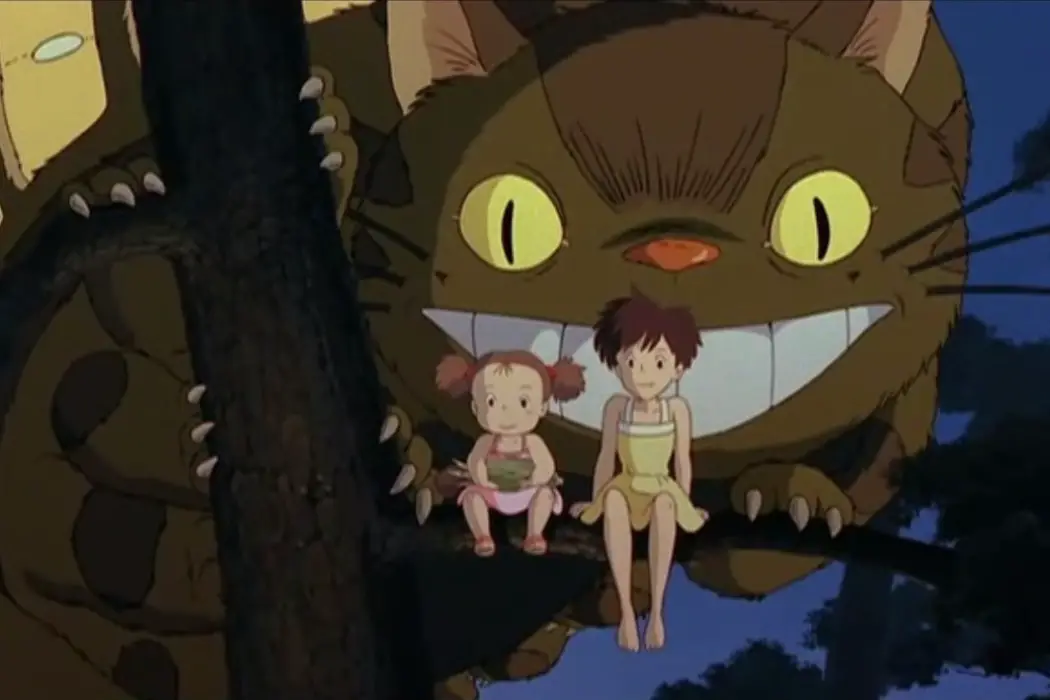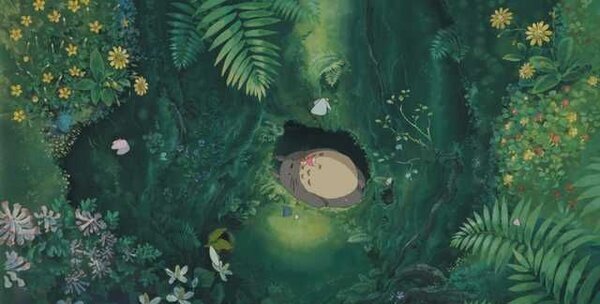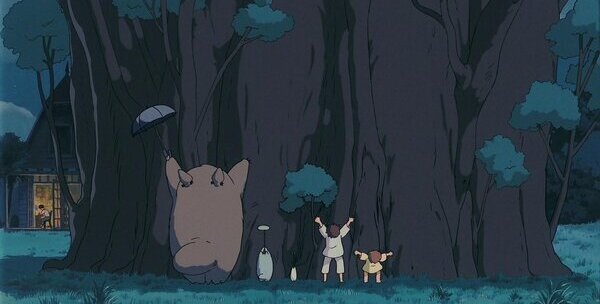The Psychology In My Neighbor Totoro

Joseph Dominguez is a Southern Californian with a degree in…
My Neighbor Totoro may come to mind for many when considering the greatest anime film of all time. Even for those that it doesn’t, the film is undeniably a classic, offering exceptional animation and a digestible, heartwarming tale of two sisters. For as simple as the narrative is, however, the film is rich in culture and personality, and understanding the concepts laid out by Hayao Miyazaki may take some digging into.
Now, there are a number of theories, thought papers, and videos that delve into My Neighbor Totoro’s meaning and lore, but what is there to learn about My Neighbor Totoro’s basis in reality? What factors shape the family dynamics seen in the film, and can Totoro, the lovable creature, be explained metaphysically?

Firstly, it’s important to understand that My Neighbor Totoro takes inspiration from Japanese culture and is set around the 1950s, so these influences as well as Miyazaki’s personal influences shape the world of the film. Instead of examining these topics, I’ll be attempting to ground and interpret some of the psychological underpinnings within the movie. To do that, perhaps it’s best to start with Totoro himself.
Imagination and Spiritualism
Totoro, the giant, lovable forest spirit, has ingrained himself into pop culture. Although he doesn’t actually appear in the film too often, the titular character has become a pronounced figure, potentially overshadowing the true emotionality of the film. Of course, it’s plausible that Totoro, the smaller Totoros, and Catbus are all actual forest spirits within the film; in fact, I would argue that that’s what’s being portrayed. However the case, fiction starts to blur with reality when considering the situation and experiences of the young sisters.
At the beginning of the film, Satsuki and Mei are children who have just moved into a new house in order to be closer to their ailing mother in the hospital. The girls don’t know many people in the area, and they’re under the impression that their house is haunted. The sisters frequently worry about the state of their mother’s health, and when they have hope that their mother will come home, they’re let down.
Interestingly, the fantastical creatures of the film seem to appear particularly during distressing times such as when the girls are waiting for their father at the bus stop or when the seeds they had planted won’t grow. With recurring worries and situational stressors, adaptation may ensue in varying forms. So, could it be that somewhere along the line forest spirits became the girls’ coping mechanisms?

Imaginary friends have the potential to be a source of comfort during times of distress and could also help children gain a sense of competence, which arguably happens for Mei throughout the course of the film. It’s not to say that the sisters are maladaptively daydreaming, but rather they’re exploring a healthy imagined-relationship that offers solace and helps them grow as individuals.
Totoro keeps Mei company during her explorative boredom, is there for Satsuki at the rainy bus stop, helps the planted seeds grow rapidly (which do not remain tall the next day, potentially inferring this was imagined), and is by the girls’ side to visit their sick mother in the end. It’s also important to note that each sister sees Totoro for the first time individually — only later do the sisters interact with him simultaneously. The sisters may only be sharing these imaginary friends as a form of imaginative play where they’ve accepted these creatures as part of their paracosm.
Of course, not all could be explained through imagination. Who did Satsuki give her dad’s umbrella to at the rainy bus stop? How did the two girls get to their mother so quickly if not for Catbus? There are countering details for both interpretations of the film, but regardless of the reading, Totoro and friends are symbols of hope to two young, evolving sisters.
Tale of Two Sisters
Totoro and friends may very well be a coping mechanism to assist the girls through emotional distress, but I don’t believe the story’s focus is on these beings. Although these spirits add a fun and fantastical layer to the film, My Neighbor Totoro focuses on the bond between two sisters in a fashion likely cathartic to Miyazaki.
Young Mei portrays behaviors common among younger siblings, mimicking the older Satsuki and seeking her approval. Throughout the first half of the film, viewers can find Mei frequently repeating after Satsuki and following her around. When Satsuki is at school, Mei seems lost on what to do.
Given the situation of their mother, Satsuki seems to take on a mild parenting role, which could be common among families where a parent is ill. Of course, the sisters still have their father watching over them, but with a busy schedule himself, the girls exhibit such dynamics in their relationship. It isn’t until the last act of the film that Mei diverges as she acts out after receiving the news that that the girls’ mother won’t be coming home.
Mei, in this instance, is at a stage of initiative. The young sister takes her environment head-on, balancing stubbornness and zeal. Running away may be a common reaction for children when faced with an emotional dilemma, and although through the wrong course of action, Mei shows a newly developed sense of autonomy before realizing a strengthened familial bond with her sister.
Conclusion
Whether elements in My Neighbor Totoro are imagined or real, the film explores family dynamics in a way that may be relatable to a number of individuals. Totoro and friends may serve a purpose in evoking cute aggression in viewers, but the psychology in My Neighbor Totoro is that of coping, imagination, and growth. I would argue that the beauty of animated films, not just My Neighbor Totoro, is that of the messages that could be drawn, allowing viewers to enjoy and find their own interpretations.
What do you think? Is Totoro nothing but a figment of two young girls’ imagination? Let us know!
My Neighbor Totoro was first released in Japan in 1988.
Watch My Neighbor Totoro
Does content like this matter to you?
Become a Member and support film journalism. Unlock access to all of Film Inquiry`s great articles. Join a community of like-minded readers who are passionate about cinema - get access to our private members Network, give back to independent filmmakers, and more.
Joseph Dominguez is a Southern Californian with a degree in psychology and an immense love for pop culture.












